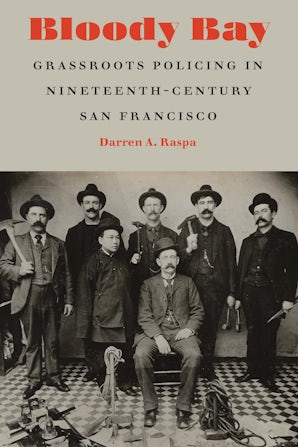List of Illustrations
Preface
Acknowledgments
Introduction: City on Fire
1. Of Heroes and Hounds: The Chilean Origins of Policing in San Francisco, 1846–1849
2. “Adiós, Caballeros”: Multiethnic Vigilantism and Derecho Vulgar in the Hinterlands, 1848–1852
3. English Jim and the Rise of Grassroots Policeways, 1851
4. Vigilant City: Organizing Community Justice, 1856
Interlude: The Politics of Protecting Chinatown, 1856–1876
5. Pick-Handles on the Plaza, July 1877
6. King of Chinatown: Community Policing Alliance and Dissolution, 1877–1906
7. Tiger Eyes, the Jewel of the Pacific, and Reorienting the Policing Model, 1912
Conclusion: Chinese Playground
Notes
Bibliography
Index
